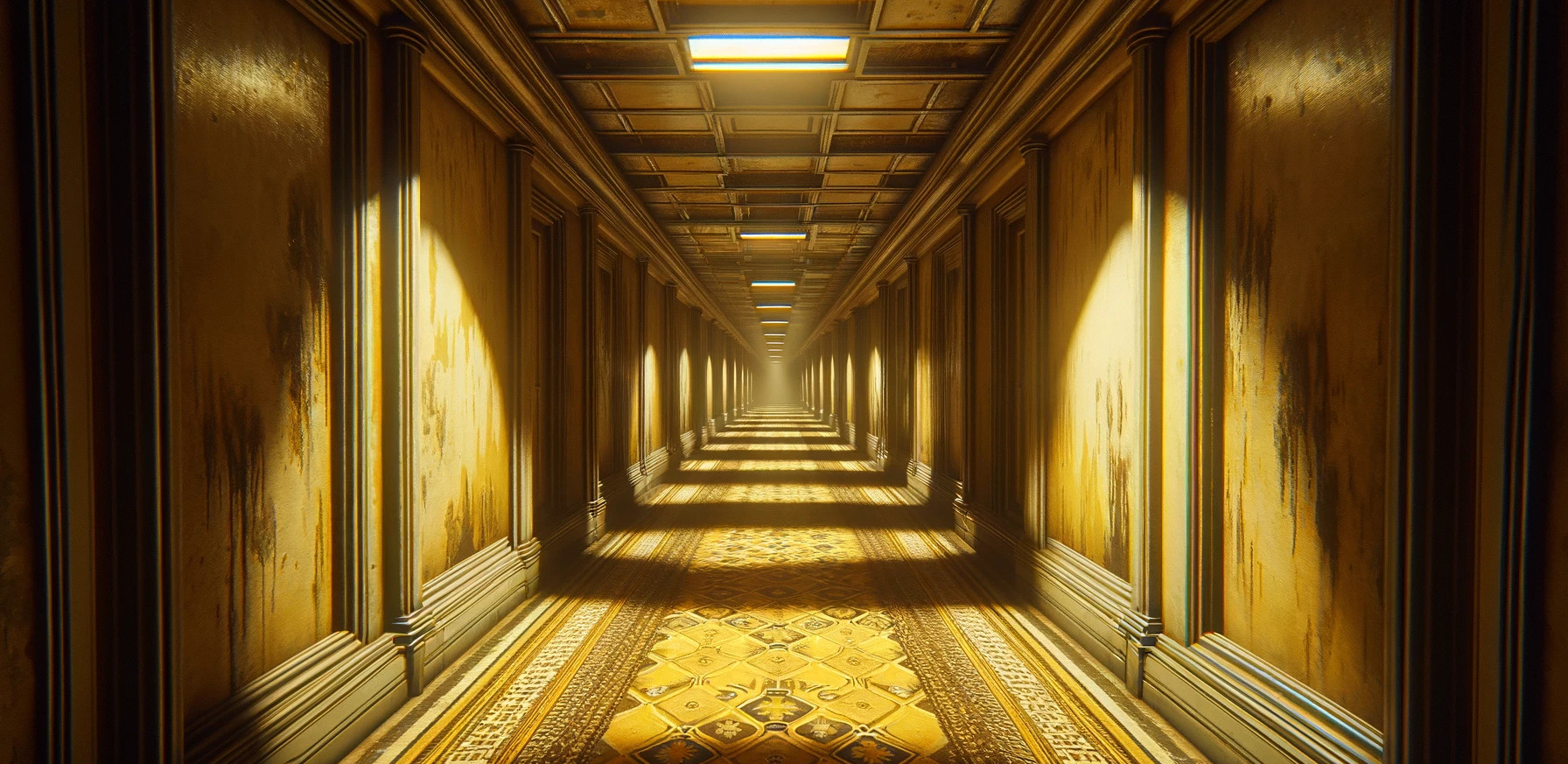3D game worlds have spawned a collection of inventive and innovative terms over the years, and two that have stuck the test of time are ‘creepypasta’ and ‘the backrooms’. Let’s explore their origins and meaning..
Creepypasta
“Creepypasta” is a term used to describe horror-related legends or images that have been copied and pasted around the Internet. These Internet entries are often brief, user-generated, paranormal stories intended to scare readers. They include gruesome tales of murder, suicide, and otherworldly occurrences. According to Time magazine, the genre had its peak audience in 2010 when it was covered by The New York Times.
Creepypasta is a portmanteau of the words “creepy” and “copypasta”, a term used for text that has been copied and pasted across the web. The stories often gain traction through being frequently shared, evolving and becoming more elaborate as more people contribute to the narrative. Many creepypastas are written as first-person narratives to create a sense of authenticity and immerse the reader in the story.
Some well-known examples of creepypasta include “Slender Man”, “The Russian Sleep Experiment”, and “Jeff the Killer”. These stories have not only circulated widely online but have also influenced other media forms, such as films, games, and traditional literature. The Slender Man, for instance, became so popular that it inspired video games, movies, and even a real-life criminal case.
Creepypasta stories range from short anecdotes to multipart series and often contain elements designed to shock or disturb readers. They play on common fears and urban legends, incorporating modern technology or current events to make the stories seem more plausible and terrifying.
The Backrooms
The “Backrooms” is a concept originating from an online creepypasta and has since evolved into a broader urban legend and internet meme. The idea revolves around an endless maze of randomly segmented office-like rooms with a monotonous, yellowish ambiance. Each area or segment in this maze is typically referred to as a “level.” The concept often includes elements of horror, mystery, and the surreal.
In the lore of the Backrooms, each level has its own unique characteristics, which can range from variations in appearance (like different wallpapers, lighting, or furniture) to more sinister elements, such as the presence of entities or changes in the laws of physics. The levels are numbered, and as one progresses, they tend to become increasingly bizarre or dangerous.
The concept has inspired various forms of media, including stories, games, and videos, each adding their own spin to the Backrooms universe. The idea taps into common fears and curiosities about endless, labyrinthine spaces and the feeling of being lost or trapped in a mundane yet unsettling environment.
More on Gaming language
3D gaming has introduced a lexicon of terms that encapsulate its unique, imaginative worlds and the innovative gameplay experiences it offers. Terms like “sandbox” describe games where players can explore and interact with a vast, open world with minimal limitations, embodying the essence of creative freedom and unscripted adventures. “Easter eggs” refer to hidden features or messages tucked away in game environments, rewarding curious players and often serving as nods to gaming culture or inside jokes. The concept of “modding” has become a staple in 3D gaming, where gamers modify game content or create new gameplay mechanics, leading to a dynamic and ever-evolving gaming experience. The term “ragdoll physics” illustrates the complex, realistic movement of characters in response to in-game actions, enhancing the immersion and realism.
Each of these terms not only defines a specific aspect of 3D gaming but also reflects the genre’s evolution and its impact on popular culture, where players are not just passive consumers but active participants in shaping their virtual experiences.
Creepypasta and The Backrooms are two such terms, used and known by the gaming and even the wider community, which have entered our modern language.
